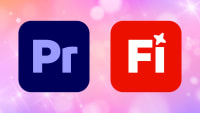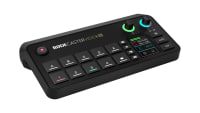
If you’re like a lot of people working in video today, you’re probably finding that your Xsan is no longer cutting it. It used to work great with your SD and 720p media in Final Cut Pro 7. Today, however, the Xsan platform is increasingly unsupported, harder to troubleshoot, and the moment you start to push your Xsan even a tiny bit a beachball shows up. Maybe you’ve noticed that it completely falls apart with FCPX Libraries, Resolve, and Premiere projects or seen the performance issues with 4K whether you’re ingesting or doing any operations that require a bit of bandwidth. It’s extremely hard to set up new clients, there’s virtually no documentation, and the GUI is so inaccurate that you’d better be a command line expert to get the information you need. On top of all this, you’re completely dependent on a pair of aging Mac minis that better not fail; leaving you and your team in a perpetual state of fear with no real understanding of how it all works.
Worst of all, you’re sick and tired of calling in your Xsan person and having them poke around your unit for two hours only to suggest rotating it a bit so that it’s a little more in tune with the moon’s orbit. If any of this sounds familiar you’re in the right place. We know your pain; we understand what you’ve been through. We started a company because of it. There is a better way. You can Escape from Xsan.
LumaForge was founded by people who used to integrate Xsan systems. Just like you we found it to be over-complicated, loud, inefficient, hard to setup and troubleshoot but what other options were there? Eventually we became so unhappy with the performance, lack of documentation and support we began looking for an Xsan alternative. After a few years of intense R&D, multiple prototypes and installations we developed an all Ethernet based platform optimized for real world collaborative workflow.
The reality is that technology has changed a lot since Xsan came out. Fibre based solutions used to be the only things that could handle video and were the only game in town for media professionals. That changed a few years ago with the advent of 10G ethernet, and over the last few years, ethernet based NAS solutions have gone from feeling cheap, buggy, and poorly performing, to now being significantly faster, better, cheaper and easier to support than any shared storage in the industry. The ability to run multiple high performance 10G users from a box that quietly sits in the room with you that allows your team to seamlessly cut 4k (and higher) video with no beachballs is now here and we built it.
We would only put our name on a solution that worked with all major creative tools (FCPX/FCP7, AVID, Resolve, Premiere, After Effects, Nuke, Pro Tools, Logic, etc.) and within multi-platform environments (Mac, Windows, Linux). It must support all functionality within the various applications (Avid Bin Locking, Resolve collaborative workflow, high performance FCPX libraries), and it had to feel like we were working off of local storage, which means no latency and no dropped frames. The final requirement for our Xsan replacement was for it to be simple to setup and simple to manage. If there’s an issue the user could be the first response.
The server platform we developed to meet all of these requirements resulted in two sets of products, the OWC Jellyfish. Since 2015, they’ve been integrated it into some of the largest and most demanding facilities in the world and they are changing the way professionals work with video content.Here are some reasons migrating from Xsan to a OWC Jellyfish can improve your workflow:
- Easy Integration - Your OWC Jellyfish comes preconfigured to work immediately after you boot it up. For simple installs you can be up and working as soon as it arrives. Connecting your OWC Jellyfish out of the box is as simple as powering it up, connect an ethernet cable to the back of your iMac Pro, and hitting “Auto Setup” on the OWC Jellyfish app, and then mounting your shares. That’s it. Seriously. You don’t need to know anything else and can start editing.
- Switches Optional – Shared storage without a switch is almost unheard of, but in many environments a switch can add unnecessary complexity. OWC Jellyfish can be configured with up to 20 direct connections for switchless network architecture. Simply plug an Ethernet cable (or Fibre with the correct transceiver) into the back of the OWC Jellyfish and you’re connected. If a switch is part of your architecture the OWC Jellyfish can provide multiple 1/10/40 GbE connections to it. BFJ customers can even work from 100G connectivity for unmatched performance for large workgroups (more than 20 users).
- No Beachballs - Your OWC Jellyfish is optimized to feel like you’re connected to an internal SSD disk, and you can expect that level of responsiveness as you work within your favorite app.
- Cheaper cable runs and setup - Ethernet is far cheaper to integrate than fibre which brings your installation costs down dramatically. If you have existing optical fibre runs these can be easily converted to work with your OWC Jellyfish.
- Your Data Lives On Your Disks - With Xsan, your data is tied to a MDC (metadata controller) and you typically have two computers (usually mac minis) set up on top of your storage managing everything. If anything happens to your MDC’S, or your drives, you lose your data. With our software defined storage your data and metadata lives at the disk level which provides an additional layer of protection and security.
- World Class Technical & Workflow Support – Support within the storage industry is generally pretty awful and has been for a long time. What other industry could sell you something that doesn’t work properly from day one, and then bill you annually to keep it that way? There is a better way, and we’re proving it. Our support team and service plans are the best in the industry because as creative professionals ourselves we know video workflow and how it works with our server.
If your company invested in Xsan a few years ago and you’re ready to move to a modern, safer, and easier to manage shared storage platform, get in touch with us today.
Other topics you might like
The Latest Updates to Adobe Firefly and Premiere Bring Even More AI Features and Workflows
Updated on Jan 7, 2026
New OWC ThunderBlade X12 Doubles Capacity to 192TB of Thunderbolt 5 RAID Storage
Updated on Jan 5, 2026
Streamline All of Your Audio and Video Needs With the New RODECaster Video S
Updated on Jan 5, 2026
 USA + International
USA + International OWC Canda
OWC Canda OWC Europe
OWC Europe


